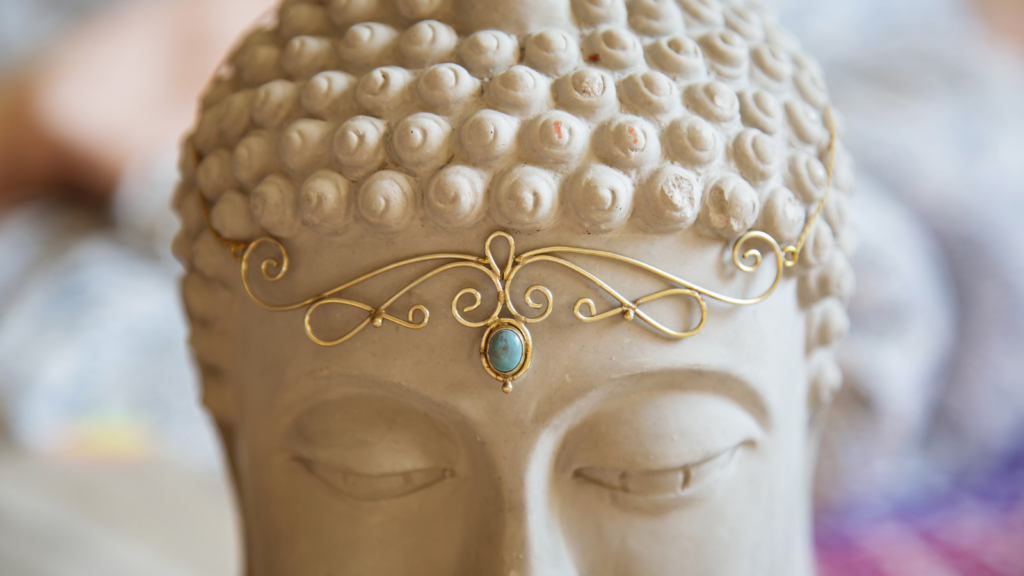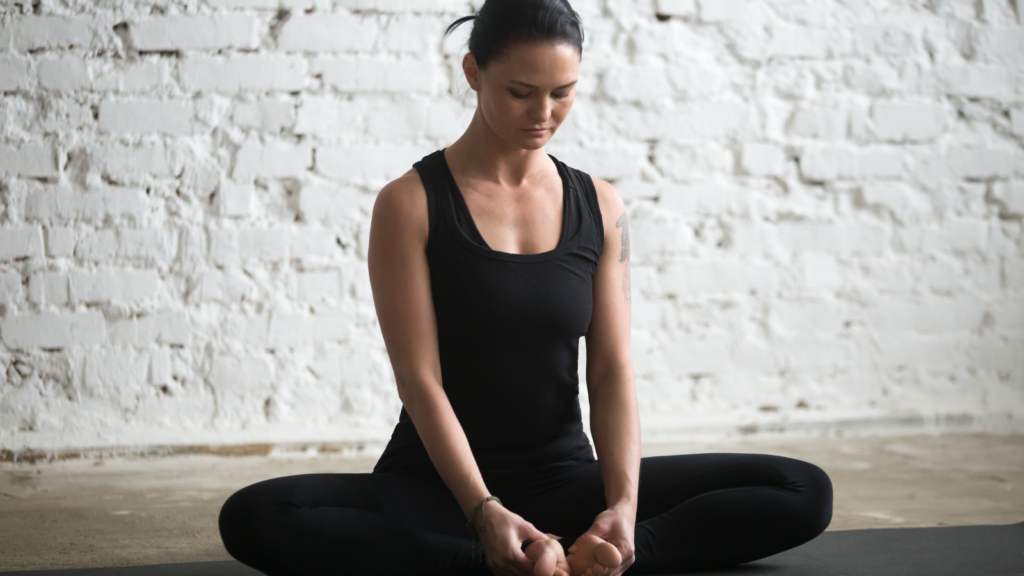Judith Hanson Lasater: The Greatest Gift of Yoga Asana

Article At A Glance
“What drew me to the practice of asana was an intuitive feeling that these movements were not just “stretching,” they seemed to have some greater connection with my soul,” writes Judith Hanson Lasater in this article about how she started yoga asana.
All I remember of my first asana (posture) class is the ceiling. Between movements, we would be instructed to lie down on our mat and rest. I do not remember very much about what we did, but I do remember I wanted more. The next morning at home, I practiced what I remembered; I was hooked, and asana became a central part of my life.
What drew me to the practice of asana was an intuitive feeling that these movements were not just “stretching”; they seemed to have some greater connection with my soul. It was only later, after years of training, that I began to learn the deep symbolism each asana represents. I now believe that each asana represents an aspect of myself and, as such, offers me a powerful doorway inward. Thus, for many people, the practice of asana can become more than a physical act; it can be a form of moving meditation.
Yoga Asana Is Virtually as Ancient as Civilization Itself

The word “asana” is Sanskrit and is actually the plural form; the correct word for one pose is “asan.” However, in English, we tend to use “asana” as singular and “asanas” as plural, even though this word does not exist in Sanskrit. Whichever word we use, asana is virtually as ancient as civilization itself. In fact, there are carvings dated from 3000 BCE that show figures sitting in the lotus pose. (1) It is sometimes reported that each asana was created or “emerged” when a “rishi” or “wise forest dweller” spontaneously moved into an asana during deep meditation. Asana both reflect and are named for animals and objects, as well as being named after sages from the Hindu tradition. Instructions for practicing specific yoga asana can be found in ancient Indian source books such as the Siva Samhita and the Gheranda Samhita, as well as the Hatha Yoga Pradipika.
Paradoxically, in the Yoga Sutra of Patanjali, generally considered the most well-known sourcebook on the wider practice of yoga, no specifics of practice are given, and asana is only mentioned in three verses, chapter II v. 29, v. 46, and v 47. Patanjali presents asana as the third step or rung in his ladder of practice after the ethical precepts (yama) and prescribed practices (niyama), and apparently expects the disciple to explore more about asana on his/her own. More interesting to me than specific practice techniques, however, are two other ideas about asana. First, asana is a spiritual practice all its own, and second, it can beneficially affect our relationship to living a spiritual life in the modern world, far from the protected ashrams and retreats of ancient India.
In our Western culture of the late twentieth century, asana has taken on a different face from what Patanjali would probably recognize. As asana practice has become more known and accepted, it has permeated many corners of society. Yoga asana can be seen in the slickest fashion magazines as well as in popular health magazines, and the media quickly informs us which movie stars are now practicing yoga. Asana has become a popular form of exercise for those suffering from overdoing strenuous physical fitness techniques. Asana is, therefore, being used as a palliative and therapeutic for physical injury.
Yoga Asana as an Expression of the Sacred

Traditionally, many teachers have taught that the main value of asana is to prepare the body for meditation by creating a strong back and supple legs so that the disciple can sit still for long periods of time. From this teaching comes the belief that asanas are “lower” or not as “spiritual” as meditation. But I feel the practice of asana has an even greater potential in the West. We may be captured at first by the lure of flexibility and strength, but we stay for another reason. Scientists continue to “discover” the pathways of connection between mind and body; in fact, some even say there is virtually no separation. (2) Yogis were aware, I believe, of this connection thousands of years ago, and the asanas honor this connection. When we practice asana, we honor that connection as well. But in the end, we stay with the practice of yoga asana because it is a powerful non-verbal expression of the sacred. And practicing and living the sacred part of life is often sadly lacking for many people in the West today.
The expression of this sacredness has to do with the nature of the asana practice itself. No matter how many times one has practiced a certain asana, when it is practiced now, it is absolutely new. When one practices an asana that particular asana has never been practiced before, each asana is absolutely of this moment. Thus, the practice of asana is a living artistic creation that has never existed before and will never exist again, just as this moment is fresh. When we practice asana, we have a chance to become present in this very moment. When we practice asana, we can bring our attention to the here and now, to the sensations and awareness we are feeling. We can observe our reaction, both positive and negative, to the pose; we can observe the sensations of ease and difficulty that arise as we stretch and bend. This is meditation, the consistent willingness to be in the here and now without being lost in our thoughts about the here and now.
The Great Gift of Savasana: Ceasing to Identify with Our Thoughts

The practice of asana, and especially savasana or corpse pose, is meditative. It can be the doorway to deeper states of meditation and gives the student the most important gift that can be given. This gift is called disidentification. In Chapter I of the Yoga Sutras, Patanjali discusses the false identification of thoughts and Self. He teaches that this false identification is at the root of all misery. He further teaches that the practices of yoga are about dissolving this false identification. For example, the great gift of savasana is that the student can begin to separate from his/her thoughts.
As one moves more deeply through relaxation, one begins to enter another state in which thought is experienced as a surface phenomenon. Then, one can begin to experience a little space between the thought and what is perceived as the Self. One teacher has said, “The problem with our thoughts is that we believe them.” The problem with believing our thoughts is that we then act from them in a way that can cause suffering in ourselves and others. When a little space is experienced between one’s thoughts and the consciousness, which is the background for thought, then thought does not have the same power. Thus, with this dis-identification comes choice. When one dis-identifies with the thought, one can choose to act from that thought or not; it no longer has as much power to control.
When one can act from choice, this leads to freedom. The gift of beginning to understand the process of dis-identification is arguably the most powerful gift there is to receive.
The Two Components of Yoga Asana: Movement and Stillness

Another immediate gift that one can gain from asana has to do with the contrast between movement and stillness that each asana represents. In verse 46, Patanjali defines asana by writing, “Staying with ease is asana.” This means that asana has two main components. First, an asana is about staying still. The word that Patanjali uses is translated as “abiding.” It is ironic that most people think of asana as the “movements” of yoga when, actually, asana represents the ability of the practitioner to stay still. And this staying still is a powerful practice. When one learns to hold the pose, one learns to let the stillness of the body become a backdrop for the constant movement of the mind.
This art of consciously staying still begins to teach the art of meditation. To explain further, during normal waking time, we tend to move the body around; we rarely sit still. I can remember the torture of my early years at school. I abhorred sitting still at my desk for hours at a time. Because we normally move our bodies around, the movements of the mind are not so apparent. But when we learn to hold the pose and remain still, suddenly, we notice clearly how agitated the mind is.
This “noticing” is at the heart of a meditation practice. When we notice something, we then have a choice; we have the choice to continue with that agitation or not. The second point that Patanjali makes about the definition of asana is that not only is it about being still, but it has another. Patanjali teaches us that in order for a position to be an asana, we must abide there with “sukham,” or ease. This is the most challenging of ideas.
It is usually true for most of us that when we move into an asana, we are at first most aware of the difficulty, the tightness, and even the resistance we are feeling at that moment. It is rare that we have a sense of ease. So what can Patanjali mean by using the word “ease: in relationship to asana? One way I have come to interpret this “ease” is my willingness to be in the pose. The ease then comes in my interpretation of the difficulty, not in the difficulty itself. In other words, the pose can continue to stretch and challenge me; perhaps that will never change. But I can become “easeful” in my interpretation of that difficulty. I can choose to remain present and allow the difficulty to be there without fighting it, reacting to it, or trying to change it.
The wider practice of yoga is not about arranging our lives so that it is perfect, easy, and non-challenging. Rather, it is about using the discipline we find in asana practice (and in the other practices of yoga as well) to be able to remain “easy” in the midst of difficulty. That is the true measure of freedom. When we learn this, then everything we do and everything we say becomes an“asana,” a position of body, mind, and soul that requires the attention that brings us into the present.
Judith Hanson Lasater has taught yoga since 1971. She holds a doctorate in East-West psychology and is a physical therapist. Judith is president of the California Yoga Teachers Association and serves on the advisory boards of Yoga Journal and the Yoga Research and Education Center.
Reprinted with permission.
Footnotes (1) Barbara Stoler Miller. Yoga: Discipline of Freedom. New York City, New York: Bantam Books, 1995. Page 8 back (2) The New York Times. “Complex and Hidden Brain in the Gut Makes Cramps, Butterflies and Valium”. January 23, 1996. Page B-5 and B-10. back


